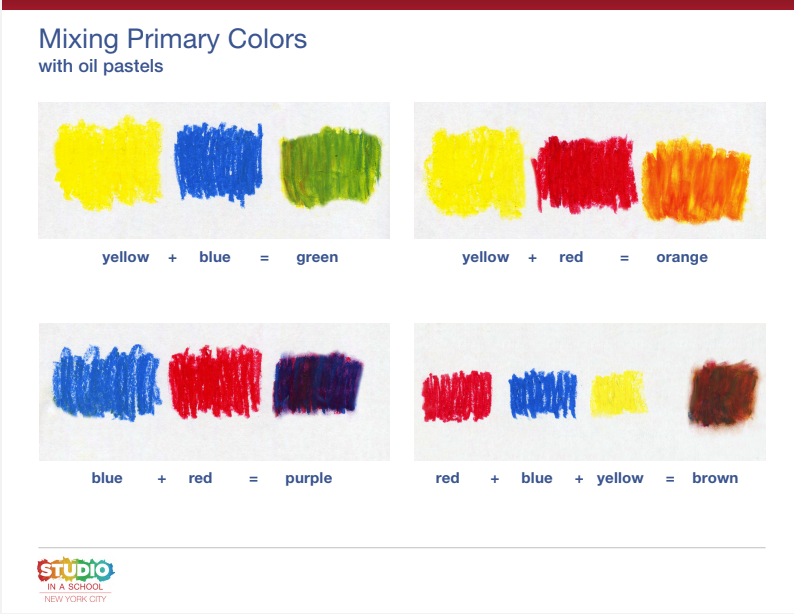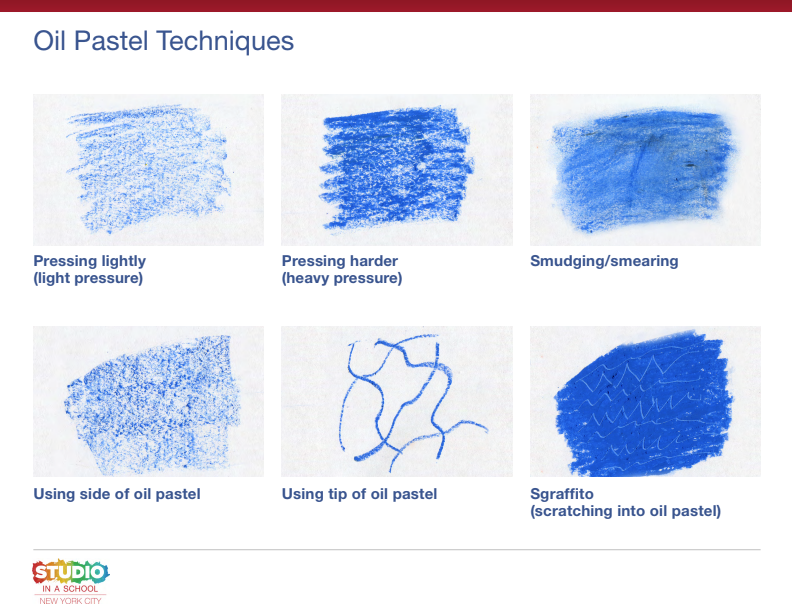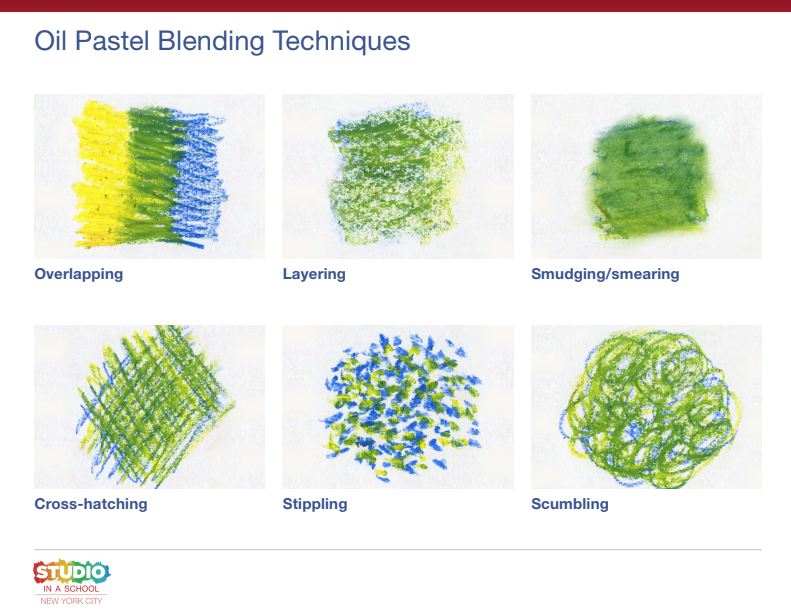Overview
Students will experiment with oil pastel techniques and mix a variety of new colors, tints, and neutral colors.
Materials and Tools
- Oil pastels
- Black construction paper
- Landscape reference images
Objectives
Students will understand that:
- Artists can mix secondary colors by mixing two primary colors together.
- Artists can mix tints by adding white to a color.
- Artists can mix shades by adding black to a color.
- Artists can add a complementary color to neutralize a color.
- Artists can use different techniques to make their oil pastel drawings more exciting.
Students will be able to:
- Mix secondary colors, tints, and shades.
- Mix complementary colors to create neutrals.
- Use different techniques to make their oil pastel drawings more exciting.
Activities
Introduce Color Relationships
The color wheel was the first organized system of colors. It illustrates the relationships between colors.

Primary Colors are the building blocks of all other colors. They cannot be made by mixing other colors.
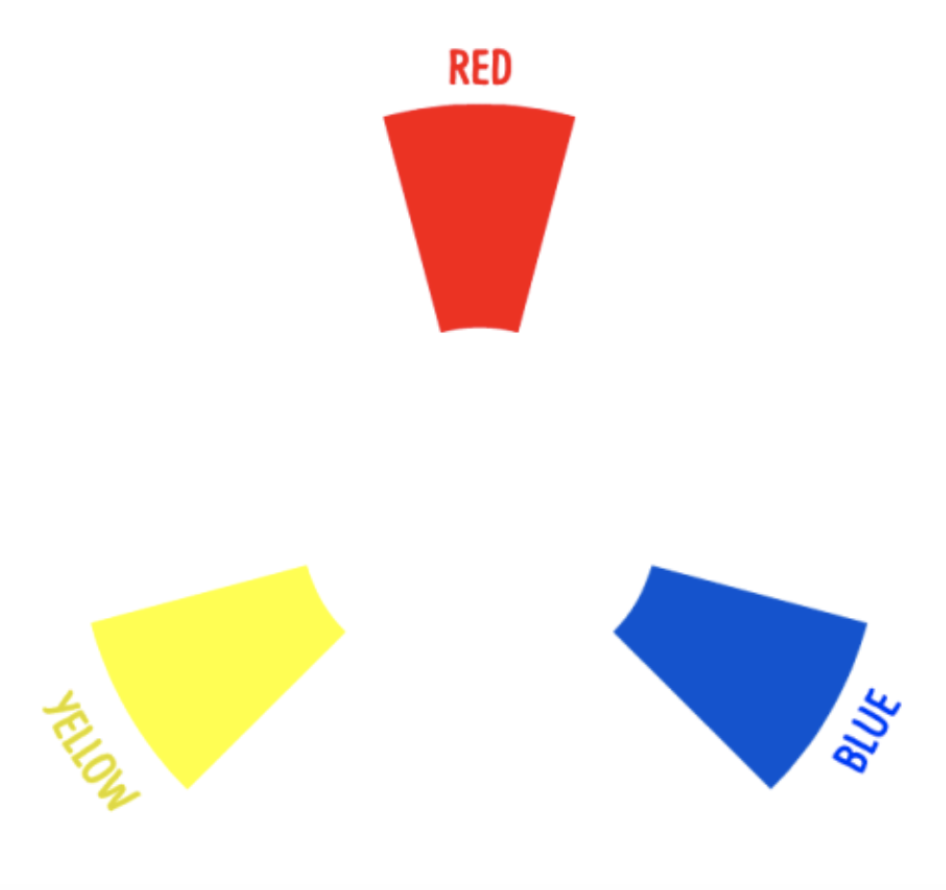
Secondary Colors are made by mixing two primary colors.
- Red + blue = purple
- Blue + yellow = green
- Yellow + red = orange

Tertiary Colors are the six colors created by mixing a primary color with an adjacent, secondary color.
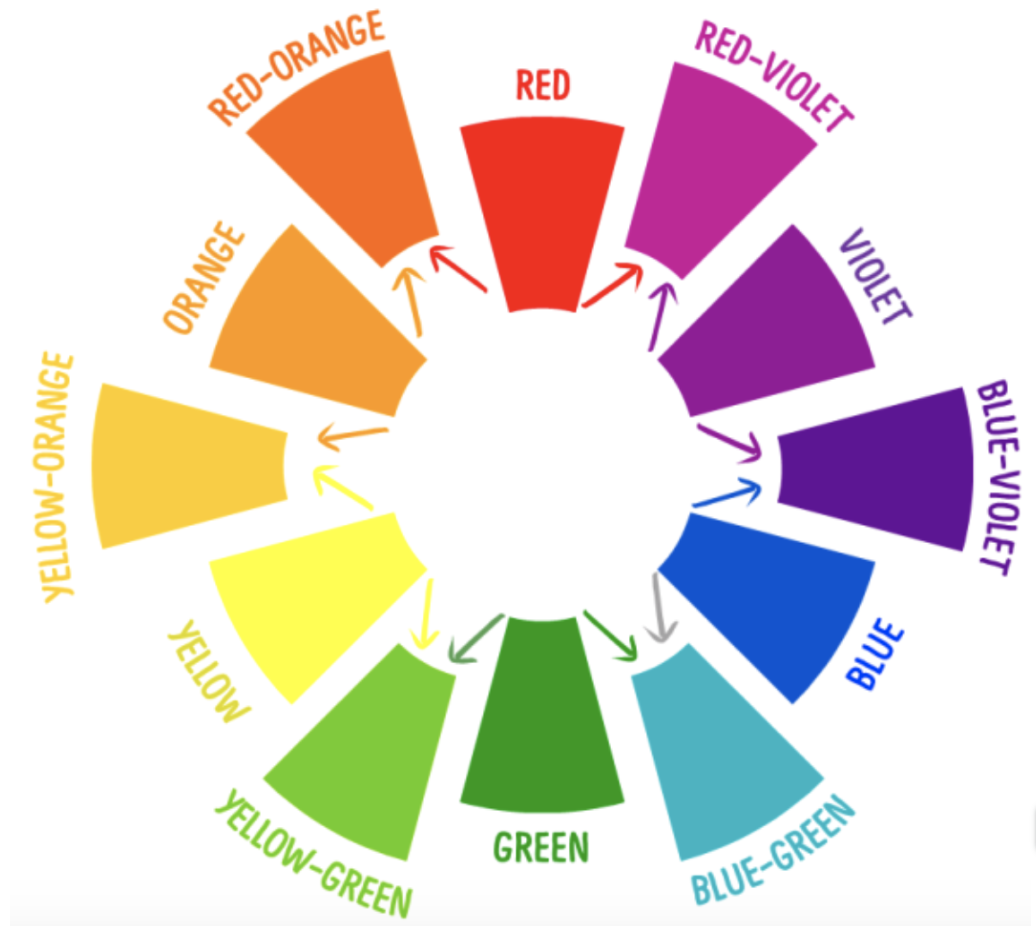
Tints are made by mixing any color with white.
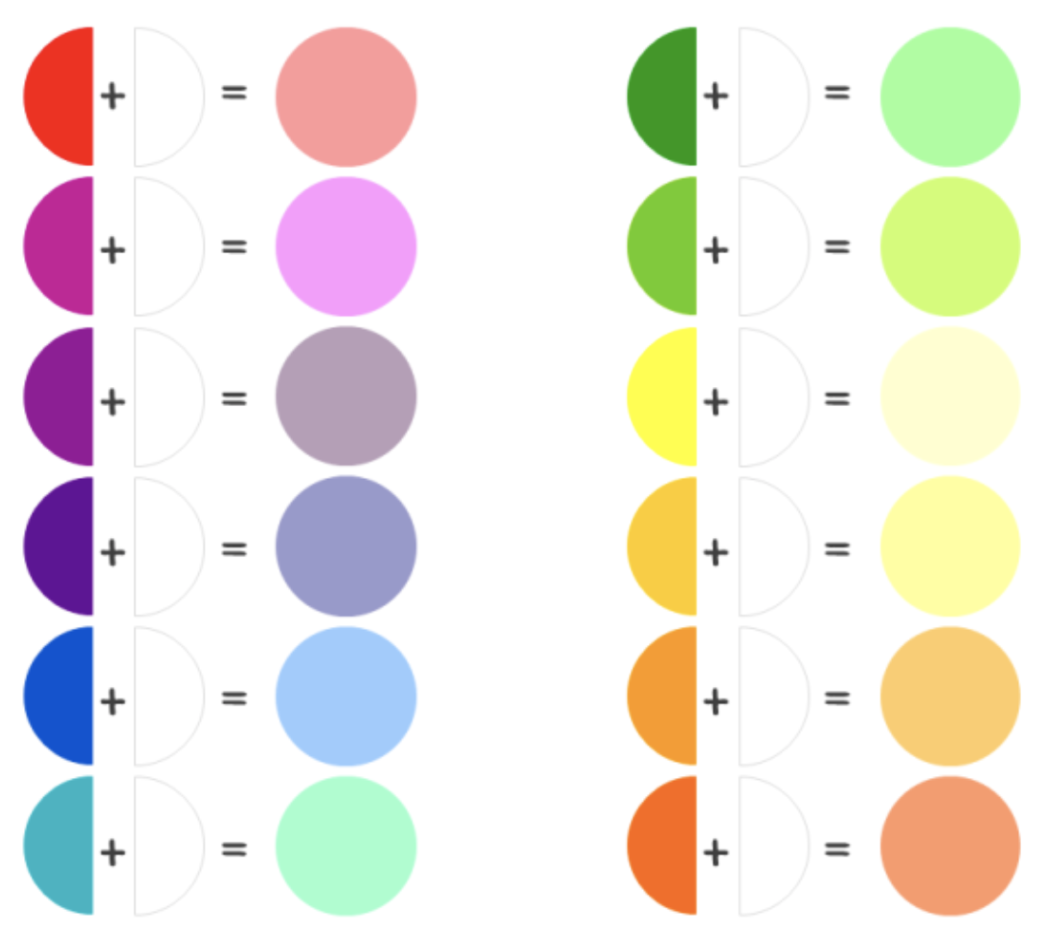
Shades are made by mixing any color with black.
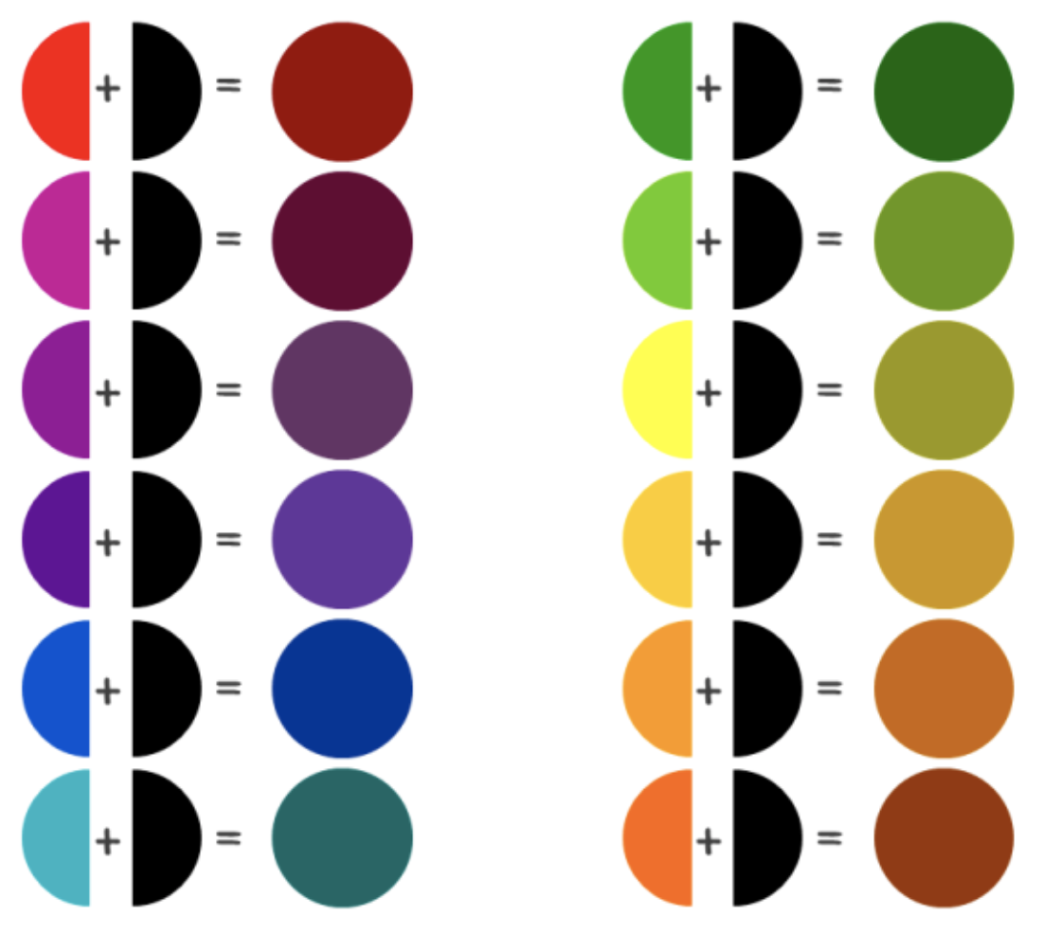
Complementary colors are two colors that are opposite each other on the color wheel and create strong contrast when placed together.
Complementary colors will neutralize each other when mixed and make brown.
Complementary colors are:
- Red and green
- Yellow and purple
- Blue and orange
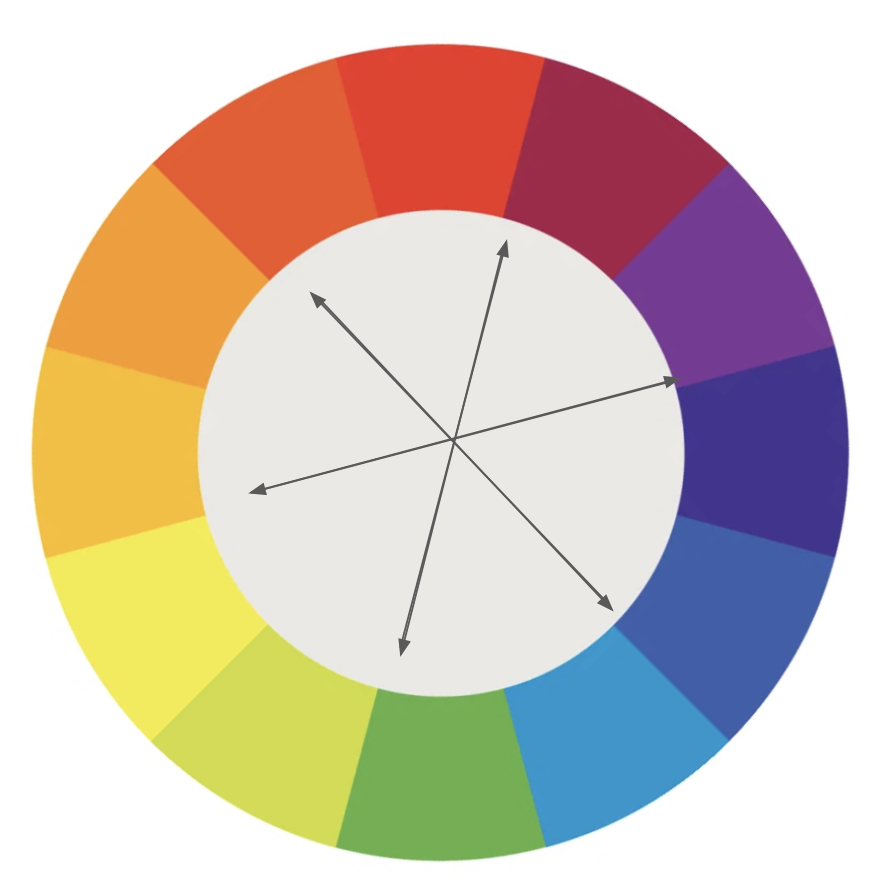
Introduce Oil Pastels and Model Color Mixing Techniques
Oil Pastels are drawing tools that can be mixed like paint.
Ask students to suggest a secondary color, tint, shade, and tertiary color (if desired) and model mixing each using a different technique.
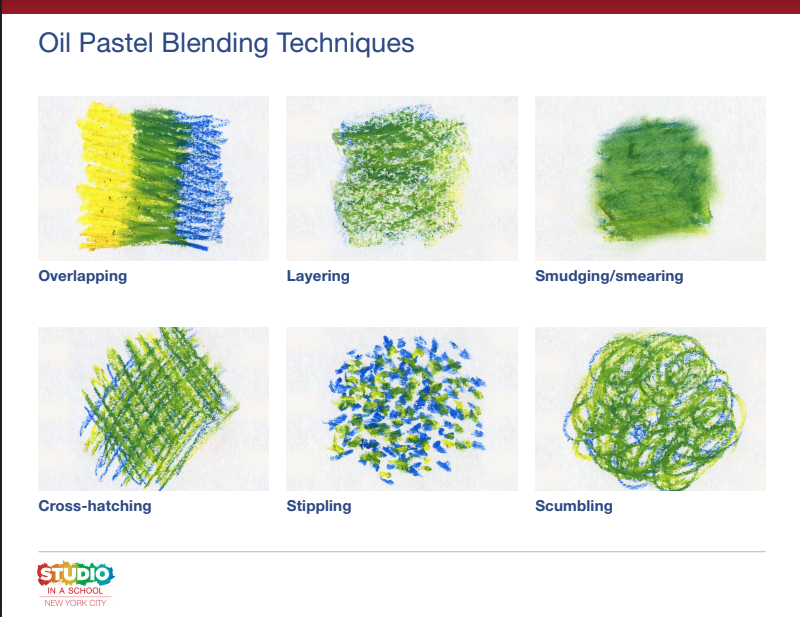
Work Time:
As students explore color mixing, blending and layering, encourage them to:
- Create at least 5 new colors, tints, and shades.
- Start with large, light areas of color.
- Fill the entire page with color.
Reflection
- What was a new color you mixed today? How did you do it?
- What was a new technique you worked with? How do you imagine it might be useful in the future?
Vocabulary
Oil pastel, color wheel, complementary color, tint, shade, neutral, mix, blend, layer
Resources
